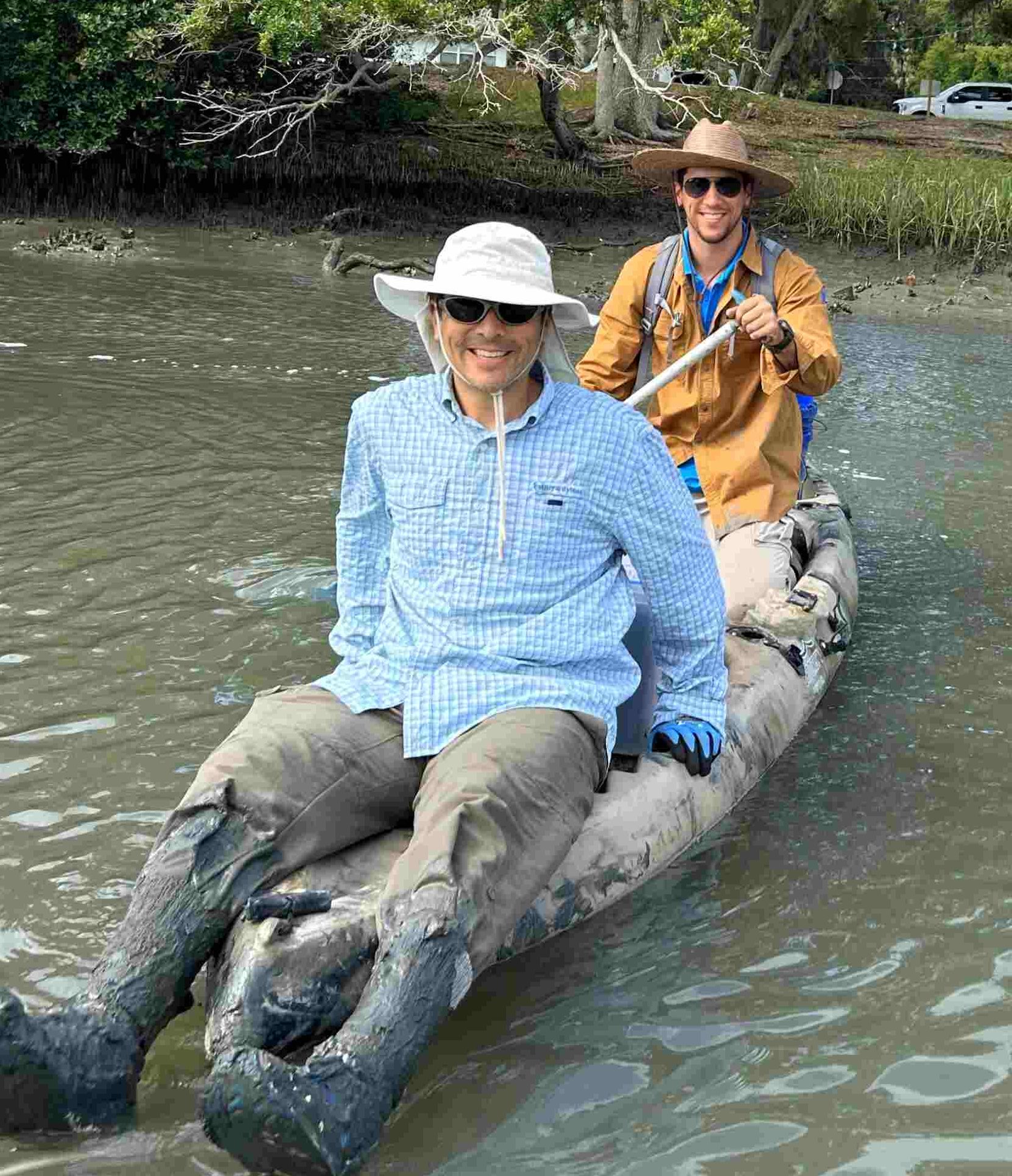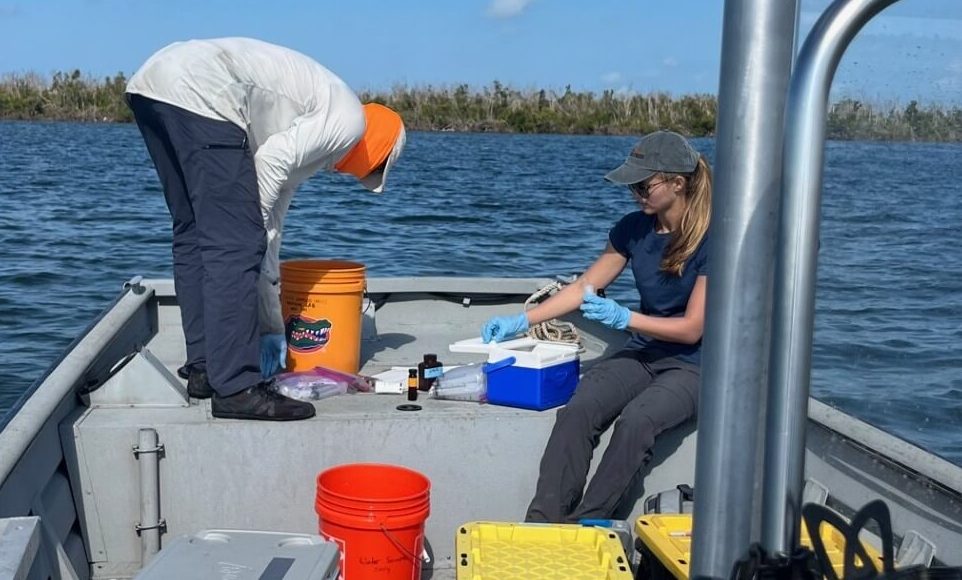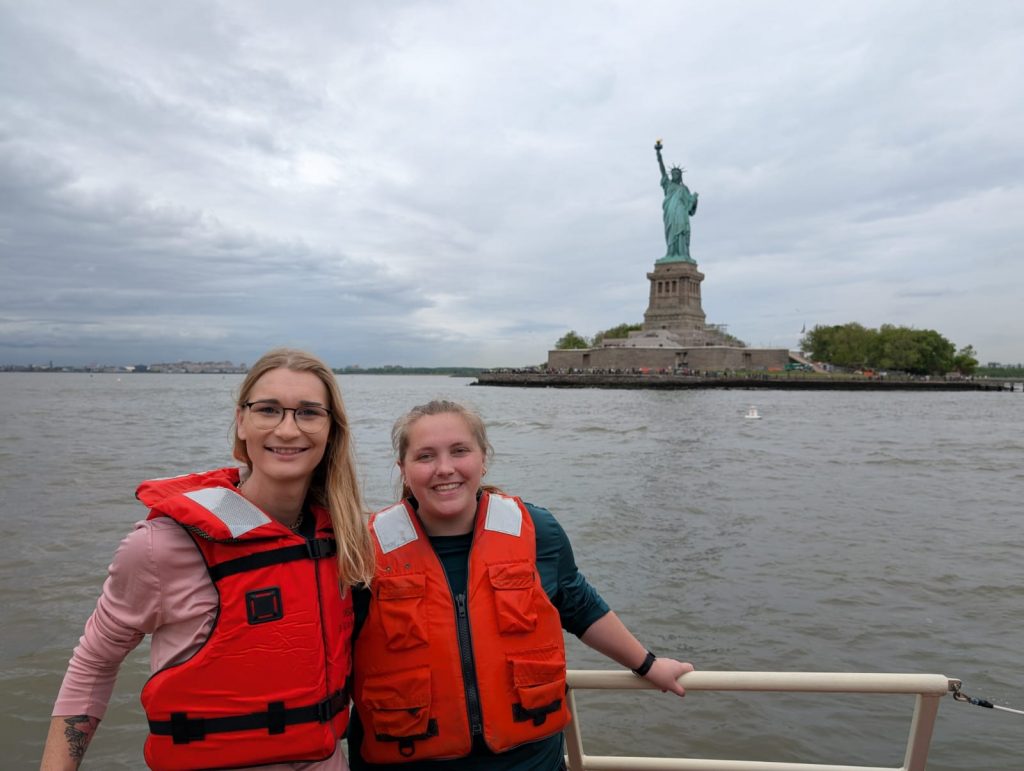Kicking off the summer field season

May marks the start of a full and exciting summer field season — one that calls for grit, teamwork and a spirit of adventure. Our students and staff will be out in the field across Florida and around the world, gaining hands-on experience in coastal research and learning what it takes to thrive as part of a collaborative scientific team.
Check out some of the exciting work that CCS teams and affiliates from across the Engineering School of Sustainable Infrastructure and Environment (ESSIE) are diving into this season:
Members of the Canestrelli Lab will be in Vicksburg, Mississippi where he will conduct oyster reef experiments at the Large-Scale Transport Facility of the USACE Coastal Hydraulic Lab. Canestrelli, an assistant professor in civil and coastal engineering, is quantifying morphological changes driven by oyster reef breakwaters under different tidal and wave conditions to inform restoration strategies.
Folks from the Olabarrieta Lab traveled to the St. Lucie Estuary last week to collect data on water movement and quality. Using sensors that track currents, dissolved oxygen, and pressure, they’re working to understand how hypoxic (low-oxygen) conditions develop — critical insight for protecting estuarine health.
Here in the Altieri Lab, we’re continuing our thin layer placement research in St. Augustine, led by graduate students Britney Hay and Adam Hymel. We also head out to Tyndall Air Force Base to set up a large-scale bamboo exclosure experiment to test nature-based solutions under real-world stressors, as part of their resilience program. Later this summer, we’ll travel to Bocas del Toro in Panama to check in on our coral reef experiments and reconnect with partners.
The Morrison lab has been preparing for the upcoming hurricane season. ESSIE graduate student Zanti Rains has been developing an instrument mount for hurricane Sentinel towers to improve water quality monitoring during storms. Sampling also kicked off for an NSF-funded project led by Chamteut Oh, Sungyoon Jung, and Elise Morrison, assistant professors in ESSIE, which will improve our understanding of how microbial communities on plastic debris contribute to the spread of antimicrobial resistant pathogens. Baseline samples were collected by graduate student Zanti Rains and CCS field technicians Todd Van Natta and Patrick Norby ahead of the 2025 hurricane season.

The coastal and marine geotechnics group of the Stark Lab launched its summer field season with riverbed strength testing in the Hudson River, followed by seabed characterization work in Duck, North Carolina, both collaborations with the U.S. Army Corps of Engineers. The team will also support a Florida Sea Grant project in Flagler County, led by UF doctoral student Saurav Shrestha, focusing on dune morphology and geotechnical monitoring to better understand and mitigate dune scarping.

In July, they’ll set up a major experiment with the Office of Naval Research in Fort Matanzas National Park in St. Augustine — part of a multi-university collaboration to improve modeling of beach morphodynamics using geotechnical data. August brings a return to the Hudson River, along with nearby instrument testing.
Overall, it’s shaping up to be a season of meaningful science, skill-building, and cross-disciplinary collaboration in action.
